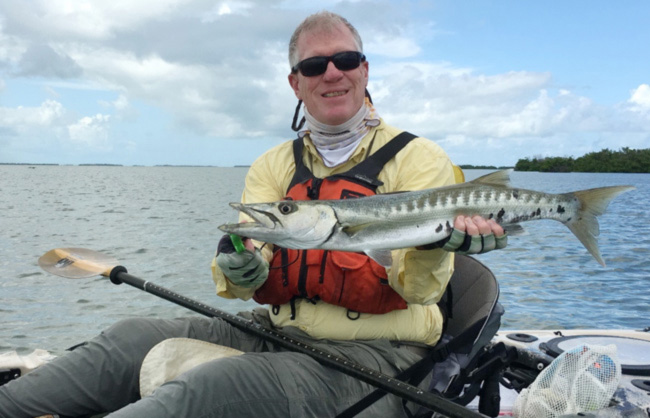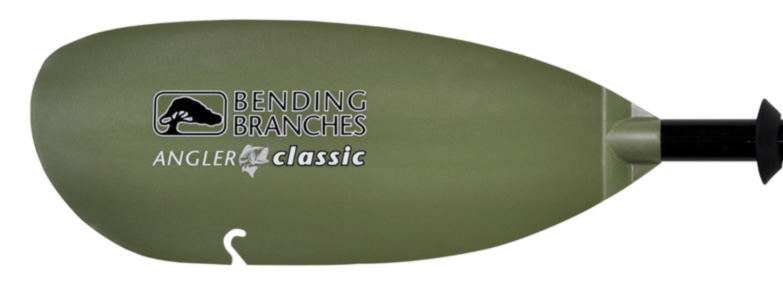A kayak paddle is a fairly simple object, which provides the propulsion for many small watercraft including fishing kayaks. Kayak paddles vary by shaft length, blade size and shape, and material of construction. I use a 240 cm shaft (editor’s note; “240 cm” is Euro-speak for sayin’ 94.4882 inches, or 7.87401666 feet, according to Google). The least expensive paddles have an aluminum shaft and plastic blades. They are heavy. More costly paddles can use fiberglass or carbon fiber in the shaft and blades. These are lighter than the aluminum or plastic ones, but they also cost more. Many people think of a paddle purely for providing propulsion, but there are various other things a kayaker can do with the paddle.

Improve Visibility – The first thing I notice when I spot a kayak in the distance is the paddle blades moving up and down. If your paddle has light colored blades (such as white, yellow, or orange), you’re all set. If you have black blades, like the carbon fiber paddle I use, you can add strips of bright colored or reflective tape to increase your visibility to boats and other kayakers. Then if you see a boat approaching that does not appear to see you, you can lift your paddle high and wave it.
Improving Balance When Facing a Large Wave or Wake – Tightrope walkers often carry long balancing poles to help them to stay upright. A paddle can be used in a similar way. If you spot a large wave or boat wake heading your way, pick up your paddle and lay it horizontally across your lap. Orient it so that the blades are parallel to the water surface. If you start to tip over, the flat blades will resist the tipping action and will improve your chances of staying upright.
Measuring Depth – Many kayak anglers install fishfinders and I have one on my larger kayak, but don’t really need it on the smaller kayak that I use most of the time. If you are paddling or fishing in shallow water and want to know how deep you are, grab your paddle near the blade on one end and jab the other end into the water. Unless the depth is greater than the length of your paddle (editor’s note: approximately 7.87401666 feet), you can tell in seconds how deep it is. Similarly, you can get a good idea of the nature of the bottom composition (mud, sand, or hard material) by jabbing the paddle into the bottom.
Pushing Off from Structure – I spend a lot of my fishing time working close to structures like docks, pilings, fallen wood, rip-rap, etc. To minimize scratching my kayak, I try to avoid actually bumping into those structures. As I get close, I can reach out with my paddle and gently push myself off. Of course, you’ll want to make sure you don’t lean out far or push really hard, as that could lead to losing your balance and capsizing.

Retrieving Lures – Some paddles, like the Bending Branches Angler Classic seen above, have a notch cut into one of the blades. This allows the user to place fishing line attached to a snagged lure into the notch, slide the paddle up or down as the case may be, and push the snagged lure off of the obstruction.
Measuring Your Catch – Many kayak anglers use plastic or metal measuring boards to learn the length of the fish they catch, but some kayak paddles come with inches (editor’s note; and hopefully not cm’s) printed on the shaft. This is not as accurate as using a flat board, but can be handy for getting a quick estimate of a fish’s length.
The next time you look at a kayak paddle, just imagine all the ways in which it can be used — it’s certainly more than a mere propulsion device.
-By John Veil